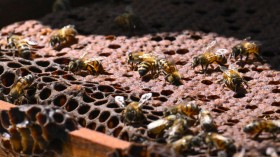Experts express concern over Elon Musk's SpaceX cutting-edge "load-and-go" fueling technology, which could put astronauts' lives at risk even before taking off.
SpaceX is gearing up for its first manned missions into space within 2018.
The 'Load-And-Go' Maneuver
According to Washington Post, the SpaceX team came up with the "load-and-go" technique when they were trying to figure out ways to make their rockets even more powerful. The solution turned out to be keeping the fuel at extremely cold temperatures so that it shrinks and more of it could be loaded into the tanks.
However, the super-low temperature means that the fuel would have to be loaded right before takeoff. At this point, the astronauts would already be on board and any complication — or even just a spark — during the process could cause an explosion, putting their lives in danger.
SpaceX maintains that should something goes wrong as part of the fueling procedure, their launch abort system would let the astronauts escape safely.
NASA In Conflict With SpaceX
NASA and other experts are particularly concerned after a SpaceX Falcon 9 rocket exploded while it was being fuelled on September 2016. No astronauts were inside the spacecraft then, but the scenario could have been much bleaker than the loss of a multi-million dollar satellite if there were people inside.
As a result of the space agency's concern over safety issues, there has been tension arising between NASA and Musk's SpaceX who have shared a long history together.
The "load-and-go" technique has reportedly been rejected by NASA due to the risks involved in the process, according to John Mulholland, who oversees Boeing's International Space Station contract.
"We never could get comfortable with the safety risks that you would take with that approach," he said. "When you're loading densified propellants, it is not an inherently stable situation."
On the other hand, those on SpaceX's side argue that risk is an inherent part of space travel.
"NASA is supposed to be a risk-taking organization," Greg Autry of University of Southern California, who was part of Trump's NASA transition team, points out. "But every time we would mention accepting risk in human spaceflight, the NASA people would say, 'But, oh, you have to remember the scar tissue' — and they were talking about the two shuttle disasters. They seemed to have become victims of the past and unwilling to try anything new, because of that scar tissue."
Benji Reed, SpaceX's commercial crew program director, says they're taking the prospect of astronaut safety extremely seriously.
Yahoo notes that the second quarterly meeting of the Aerospace Safety Advisory Panel on May 17 would likely offer more details on updates addressing the safety concerns.
© 2024 NatureWorldNews.com All rights reserved. Do not reproduce without permission.





